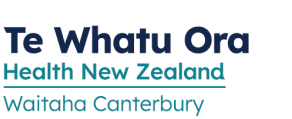What does it do?
Pyrazinamide is an antibiotic used with other medicines to treat tuberculosis (TB).
Before you start
- Tell your doctor if you have kidney or liver problems, or gout.
How should you take it?
Take pyrazinamide regularly as directed with a glass of water. You can take it with or without food. Keep taking it until the course is finished.
It is important to take it regularly. If you often forget to take it, it may not work as well.
What if you forget a dose?
If it is nearly time for your next dose, skip the missed dose and take your next dose at the usual time. Otherwise, take the missed dose as soon as you remember. Do not take two doses at the same time.
Can you take other medicines?
Tell your pharmacist or doctor about all medicines or treatments that you may be taking, including vitamins, herbal products or recreational drugs.
What side effects might you notice?
| Side Effects | Recommended action |
|---|---|
|
Symptoms of liver problems including: yellow skin or eyes, itching, dark urine, pale bowel motions, abdominal pain Reduced number of blood cells that help your blood to clot - symptoms include: easy or unusual bruising or bleeding |
Tell your doctor immediately |
|
Joint or muscle aches or pains |
Tell your doctor |
|
More sensitive to sunlight (sunburn or rash) Stomach upset |
Tell your doctor if troublesome |
If you notice any other effects, discuss them with your doctor or pharmacist.
Other information:
- Limit alcohol intake while taking pyrazinamide. Alcohol may increase the risk of liver problems.
- You will need regular blood tests while taking pyrazinamide to check if it is causing problems with your liver.
- Protect yourself from too much sunlight while being treated with pyrazinamide. Always cover up and apply a thick layer of broad spectrum sunscreen (at least SPF 30) when outside. Do not use sunbeds.
This leaflet contains important, but not all, information about this medicine.
Prepared by the MyMedicines Committee at Christchurch Hospital, Te Whatu Ora - Waitaha, New Zealand. April 2025
For more general information about this sheet and its contents, see: What does a My Medicines sheet cover?
Te Reo Māori
Te Reo Māori information sheets supported by Health Quality and Safety Commission New Zealand
Web links for this sheet in different formats
Click on buttons to copy web addresses for this leaflet:
If your browser does not automatically copy these links use its copy command instead.
About My Medicines
My Medicines Patient Information Leaflets (PILs) contain important, but not all, information about the medicines they describe.
For more information about the sheets, see: What does a My Medicines sheet cover?
My Medicines is developed by a team at Te Whatu Ora – Waitaha. Our team is made up of doctors, pharmacists, and a non-medical person to help us keep to plain language. We also discuss our information with specialist health professionals or groups when needed

